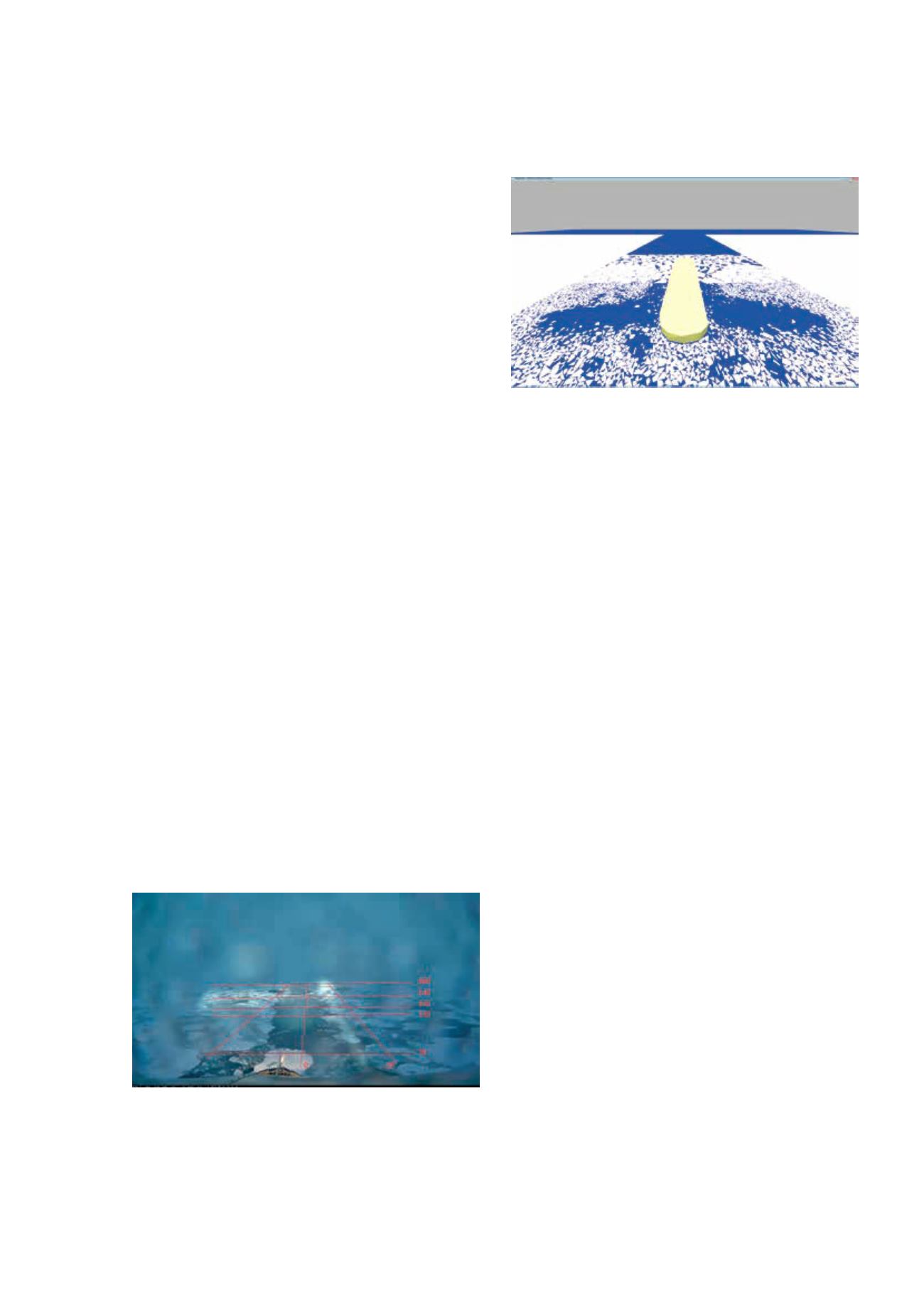

40
SAMC
o
T
• ANNUAL REPORT 2015
Modelling the hydrodynamic effects on floe
ice-structure interactions
Discrete element methods have been widely used by many
researchers worldwide to model the dynamics of broken-
ice fields and the dynamics of structures surrounded by ice.
However, despite the large number of ice-related applica-
tions of DEM described in the scientific literature, prior
development of the method has focused mainly on improv-
ing the modelling of contact interactions between ice floes
and structures, whereas the effects associated with fluid
dynamics have been largely neglected. The PhD thesis
of Andrei Tsarau, which was successfully defended in
December 2015, introduced several hydrodynamic models
that can be incorporated into DEM to improve the simula-
tion of marine operations in broken ice and to enable new
applications of the method to ice-related problems.
Flow regimes in different areas around a structure may
differ significantly from each other, i.e. the flow regime
upstream of the structure is fundamentally different
from that downstream and also from that in the wake of a
propeller if the marine structure is equipped with propel-
lers. Thus, three major topics and three corresponding
approaches were considered in the thesis:
• Potential theory was adopted to model the hydro
dynamic effect on ice floes upstream of a structure
• The Vortex Element Method (VEM) was employed to
simulate the hydrodynamics in the downstream wake
• A special technique based on empirical formulas was
developed to predict the dynamics of ice in the propel-
ler wash of a ship.
The novel synthesis of DEM and a potential-flow model
presented by Tsarau, enabled simulations of the hydrody-
namic interactions in multi-body systems, e.g. structures
in broken-ice fields. Unlike standard potential-flow codes,
this method can handle the actual motions of bodies as they
arbitrarily move and rearrange themselves in the system.
For the first time, the formation of vortices in the flow
downstream of an offshore structure was shown to have
an effect on the spreading of broken ice in the wake of the
structure. This effect was efficiently simulated by employ-
ing VEM, demonstrating a new application of the method to
ice-related problems.
The propeller-wash effect has been used for decades in
Arctic marine operations to remove ice locally. However,
a comprehensive numerical model that can accurately
simulate such operations is presented for the first time
in Tsarau’s thesis. This model predicts the propeller-flow
velocities, calculates the hydrodynamic forces on the ice
and integrates the equations of motion of the ice cover,
which is represented by an ensemble of rigid bodies that
may interact with each other. The computations associ-
ated with collision detection and collision responses
are performed by an efficient physics engine which was
integrated with a fluid-flow model to enable hydrodynamic
simulations in the overall simulation environment.
In September 2015, a specially designed full-scale experi-
ment with the Swedish icebreaker Frej was conducted
to calibrate the prop-wash model (Figure WP4_5).
Additionally, a validation study in which previously collected
experimental data were compared with numerical predic-
tions has proved the high accuracy of the model in simula-
tions of an offshore operation in which the propeller flow of
a vessel was employed to clear channels in multi-layered
ice rubble (Figure WP4_6).
Figure WP4_5. Full-scale prop-wash test with the icebreaker
Frej. An isolated ice floe was pushed along an ice-free channel
with the propeller wash (units in metres).
Figure WP4_6. Numerical simulation of channel clearing with
the propeller wash of a ship.
















